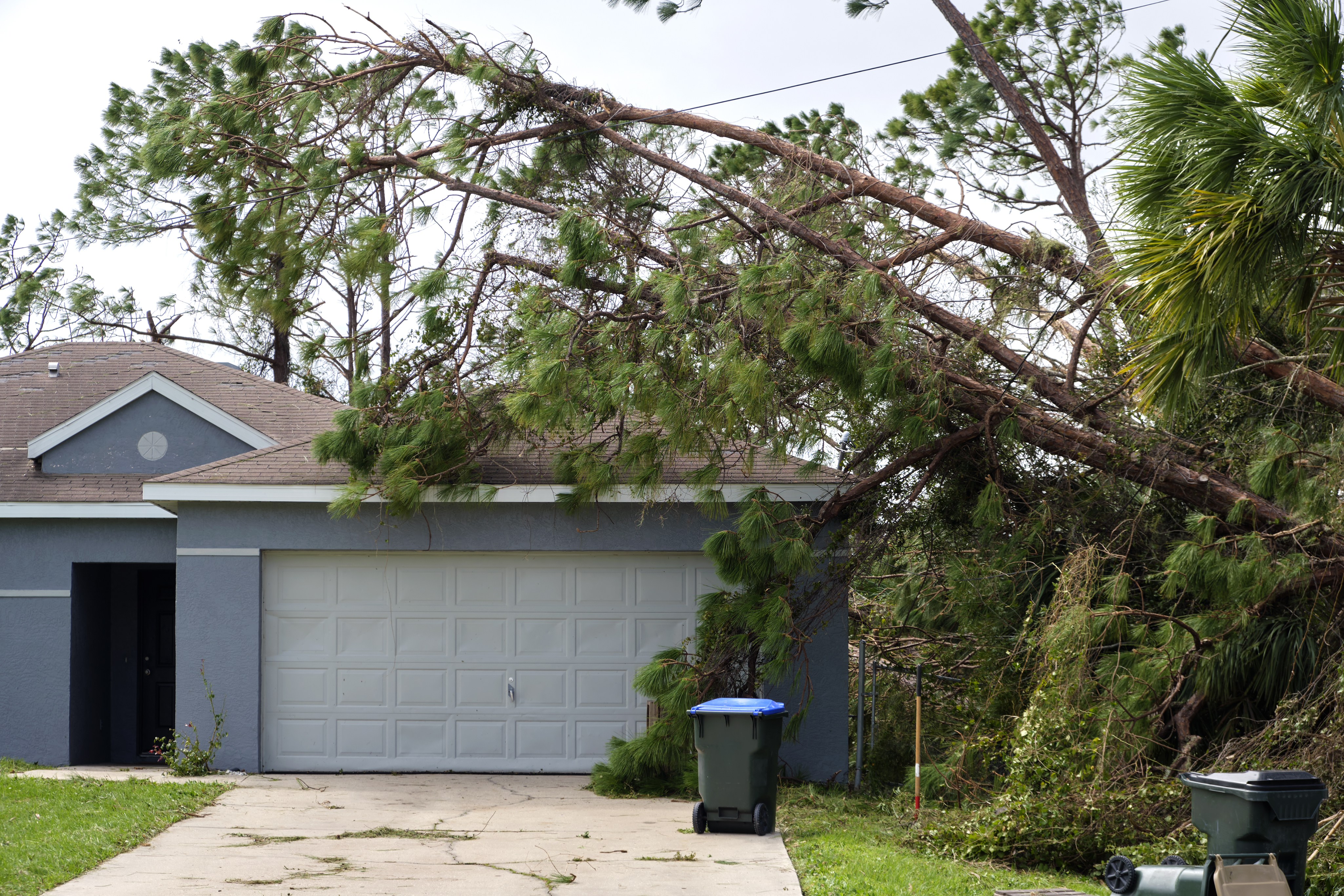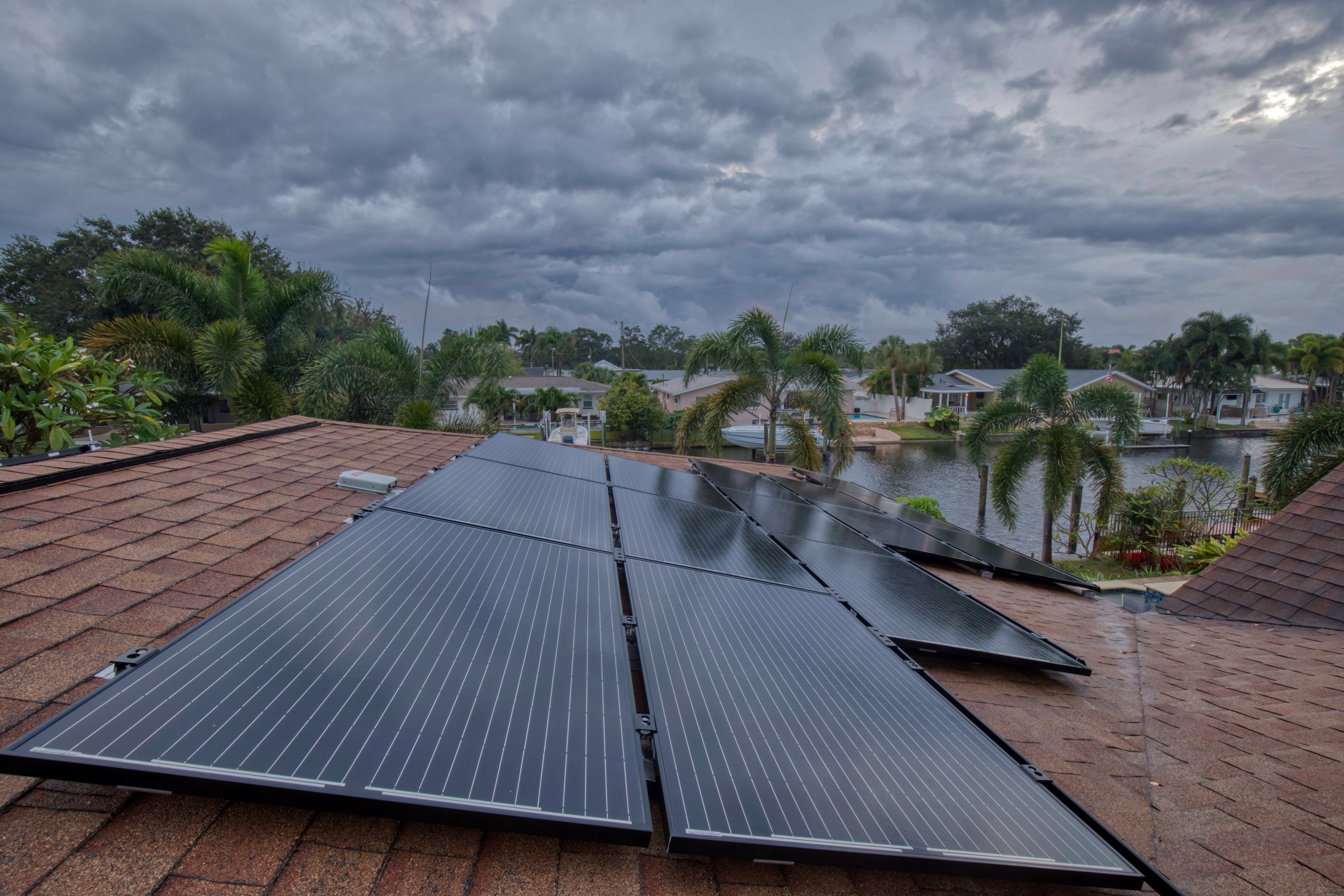Over and over again, solar panels have proved their remarkable resilience and durability. In 2017 for example, a hailstorm in Denver shattered car windows and left golf ball-sized dents on the roofs of homes and vehicles. But just one solar panel out of the 3,000 installed on the nearby National Renewable Energy Laboratory sustained damage. And when Hurricane Maria surged through Puerto Rico, a rooftop solar array in San Juan's VA Hospital continued to operate at full capacity even with hurricane winds of 180 mph.
Damage sometimes does happen, however. Falling debris can dislodge or crack panels, for instance. Knowing how to prepare your panels for severe weather can help you minimize the risk of damage.
With severe weather on the rise, here's a look at some simple measures you can take to protect your solar panels.
How can a severe storm affect your solar panel installation?
High wind speeds and heavy rain can dislodge solar panels, while flying debris might compound the damage. However, most panels are tested by manufacturers to ensure they can survive hurricanes. They are usually highly waterproof and certified to withstand wind speeds of up to 140 mph. Panasonic’s solar panels can even endure hailstones up to 1 inch in diameter.
If damage does occur, it’s usually because of flying debris, weaknesses in the roof, or poor installation. In hurricane-prone areas such as Florida and Texas, local governments often require installers to undergo rigorous testing of their equipment to ensure it remains fixed even in very high wind speeds.
How to prepare your solar panels for a storm
In addition to making sure that a trusted and experienced contractor installs your solar panels, there are several things you can do to protect your panels from severe weather:
#1. Trim overhanging trees
Cut your trees back as much as possible to keep the wind from sweeping broken branches onto your panels. While they are unlikely to break your panels, they might cause scratches or minor cracks that could affect your system’s integrity and performance.
#2. Check for debris
Flying debris is one of the most common causes of damage to solar panels. Check your property and secure any objects that could become projectiles during a storm, such as tools, fallen tree branches, plant pots, and garden furniture.
#3. Turn your solar panels off
Power surges damage electrical equipment. While your panels should turn themselves off if a hurricane triggers a power surge, you can completely prevent the risk by manually switching them off ahead of a storm.
#4. Seal and secure solar panel components
If a particularly strong storm is coming and your panels haven't been inspected for several years, you may want to ask an installer to inspect them. They can check that waterproof seals are intact, secure exposed wires and connections, and ensure there are no unsecured objects on your roof that could be propelled through the air in strong winds.
#5. Charge your home battery system
If your solar panels are paired with a home battery system, fully charge it ahead of a storm. That way, you’ll have access to backup power during and after the hurricane, even if the power goes out. Make your backup power last longer by unplugging appliances you aren't using and monitoring how much energy you're drawing from your battery.
#6. Take photos of your solar equipment
Take photos of your panels and components ahead of the storm as proof of their condition. If they do sustain any damage, you’ll have the documentation you need for your insurance company.
What to do for your solar panels after a severe storm
Once a storm has passed, it's important to check your panels for signs of damage. Some damage may be immediately visible, such as badly cracked, broken, dented, or lifted panels, while other damage, such as scratches or smaller cracks, may be harder to spot. If the storm was particularly severe, you might want to have a professional check your system to catch any less visible damage.
Once you've turned your panels back on, look at your monitoring system to see whether your panels are producing as much power as normal. Keep an eye on their performance in the weeks immediately following the storm so you can quickly identify whether any panels are producing less power than usual. If this happens, speak to your installer.
Remember, solar panels are designed to withstand the elements for 25 to 30 years. But with extreme weather on the rise, it’s good to know how to protect your installation.
If you’re looking for more information on maintaining your existing solar system or going solar for the first time, Panasonic has you covered with best-in-class solar and storage products, helpful resources and a network of trusted authorized installers.





